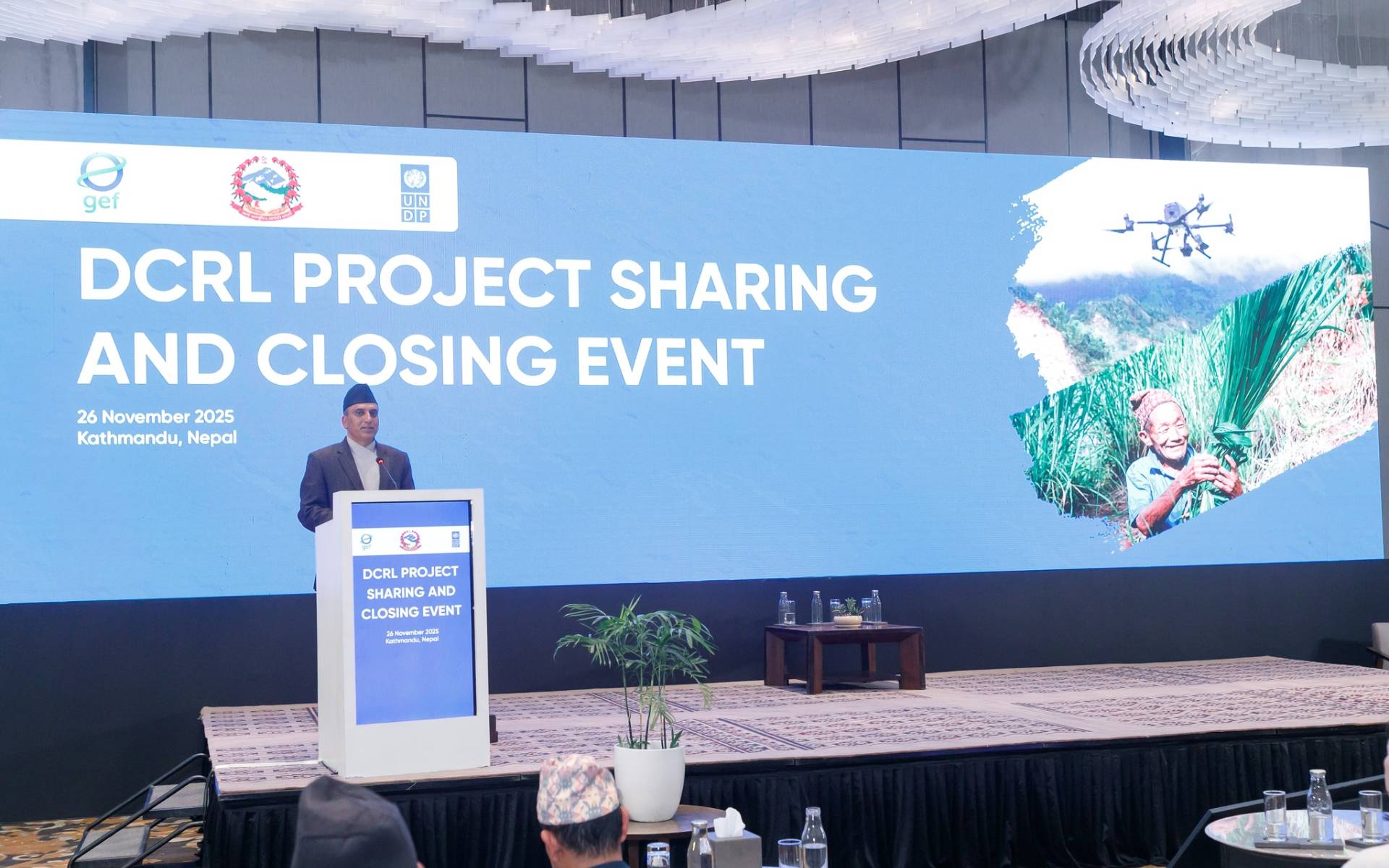
Kathmandu: The Government of Nepal and UNDP marked the completion of the Developing Climate Resilient Livelihoods (DCRL) project on November 26, celebrating five years of progress in tackling water scarcity, ecosystem decline, and climate impacts in Nepal’s Mid-Hills. The project was supported by the Global Environment Facility’s Least Developed Countries Fund (LDCF).
Senior officials from the Ministry of Forests and Environment, provincial governments, local representatives, experts, and community members attended the closing event.
Over the past five years, the community-led initiative has restored watersheds and introduced climate-smart solutions across drought-prone areas of Khotang and Okhaldhunga. Key achievements include:
These efforts have led to better water security, improved soil moisture, more diverse crops, and reduced out-migration. About 74% of project beneficiaries were from local ethnic communities, including the Majhi people.
Speaking at the event, Dr. Rajendra Prasad Mishra, Secretary at the Ministry of Forests and Environment, described the DCRL project as one of the ministry’s most successful initiatives. He highlighted how large-scale contour trench systems are helping restore water sources, improve drinking water access, and boost agricultural productivity. He also thanked the Global Environment Facility, UNDP, and the Department of Forests and Soil Conservation for their support.
With provincial governments already committing resources to continue the work, the DCRL model offers a scalable blueprint for integrated watershed management in Nepal’s Mid-Hills.
UNDP Resident Representative Kyoko Yokosuka said that the project demonstrates what can be achieved when communities, government, and innovation work together, calling it a pathway toward Nepal’s climate-resilient future.